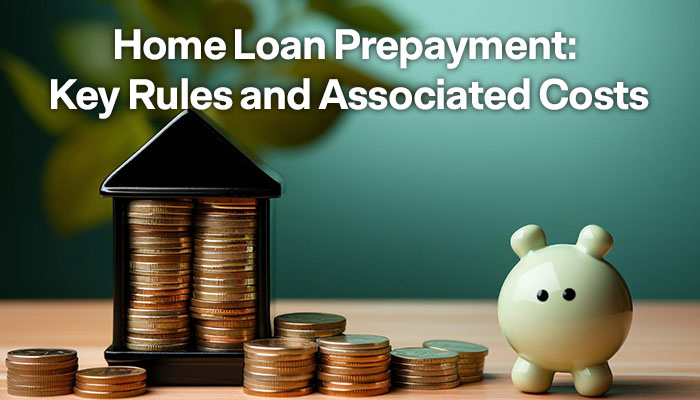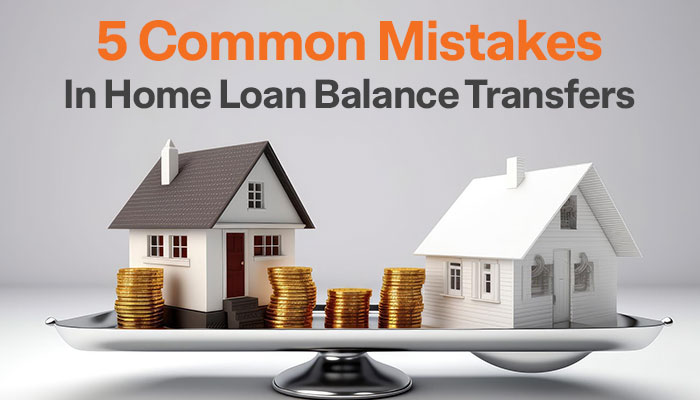Floating Home Loan Interest Rates: Benefits, risks, and how they work

One of the most crucial decisions you will make when considering a home loan is choosing a variable rate over a fixed rate. Home loan interest rate variables, commonly referred to as floating interest rates, are linked to market conditions and fluctuate over time.
Let's delve deeper to explore the benefits, risks, and how floating home loan interest rates work to help you make wise choices. Whether you’re applying for a home loan or refinancing an existing loan, it’s important to understand the floating interest rates to choose the best option according to your needs.
What is Floating Rate?
A floating interest rate, or variable rate, is one that changes periodically based on a benchmark rate like the RBI’s repo rate. In India, loans with floating rates can offer lower initial payments but may fluctuate over time, making future payments unpredictable. While this can be beneficial if interest rates remain stable or decrease, it carries the risk of higher payments if rates rise.
How do Floating Home Loan Interest Rates work?

Floating interest rates, also known as variable rates, are calculated based on a benchmark rate, such as the Reserve Bank of India (RBI) repo rate or the lender's Marginal Cost of Funds-based Lending Rate (MCLR), plus an additional spread determined by the lender.
Here's how it works:
- Base rate/benchmark: The floating rate is typically tied to benchmarks such as the Marginal Cost of Funds-Based Lending Rate (MCLR) or Repo Rate Linked Lending Rate (RLLR).
- Spread: Lenders add or subtract a spread from the base rate to determine a final rate. This can vary depending on your loan amount, tenure, and other factors.
- Market conditions: If the market rate (such as the RBI repo rate) goes up or down, your floating rate will be adjusted accordingly, affecting your EMI (equal monthly instalments).
Benefits of Floating Home Loan Interest Rates

Various advantages of floating home loan interest rates:
- Low interest rate
- Opportunity to reduce EMI
- Long-term investment potential
- No prepayment penalty
- Major flexible terms
One of the big advantages of a floating rate of interest home loan is that it is lower than a fixed interest rate. This means you can enjoy a lower EMI at the beginning of your loan tenure, especially when market conditions are favourable.
When the market value decreases, your floating rate also decreases, which can reduce the EMI. This is an opportunity to save money over the life of your loan if the market is still favourable.
Over time, if interest rates are lower or decrease, you can save the entire principal payment. This is especially beneficial for long-term loans where even a small reduction in interest rates can result in significant savings.
Many lenders allow prepayment or early repayment of home loans at no extra cost, especially with floating-rate loans. This allows you the flexibility to pay off the loan sooner without paying additional money, saving you interest in the long run.
The floating rate of interest home loans are generally more flexible in terms of repayment. They can let you adjust your payment plan as needed, especially if your financial situation changes.
How to reduce the risk of Home Loan Interest Rate fluctuations

While there are some risks involved with floating rates, there are steps you can take to manage them effectively:
- Monitor interest rates regularly
- Choose a lender with transparent terms
- Proper planning
Keep up to date with market news and benchmark rates. By keeping an eye on the RBI’s policy decisions and fluctuations in the market, you can better understand when interest rates tend to rise or fall.
Be sure to choose a lender that has clear information about how they calculate and adjust their floating interest rates. Look for transparent information on how they change their rates and what factors affect them.
If you anticipate that rates may rise in the future, it’s best to plan your finances accordingly. Set up extra money in case your EMI is going up or consider paying off your loan faster during the low interest rate period.
In a Nutshell
Choosing a floating interest rate for a home loan relies on your risk consideration and monetary goals. If you are comfortable with the possibility of fluctuating rates and the capability to decrease EMIs, a floating rate may be the right preference for you.
Before deciding, make sure to assess your current financial situation, long-term goals, and the overall economic environment. It is considered a better idea to discuss your options with an expert in home loans, such as those available at IIFL Home Loans, who can assist you in opting for the most suitable loan type. To explore the best home loan options and find out more about floating rates, visit IIFL Home Loans.
FAQs
Q1. What is the interest rate on a floating home loan?
The floating home loan interest rate is a fluctuating interest rate in the market. It is linked to a benchmark rate like the RBI repo rate and may change over time.
Q2. How does the floating rate affect my EMI?
Your EMI may go up or down depending on the change in the current rate. If the rate goes up, your EMI goes up and if it decreases, your EMI will also go down.
Q3. Is a floating rate better than a fixed rate?
It depends on various crucial factors. A floating rate may be cheaper initially, if rates decrease, but may also increase if market conditions change.
Q4. Can I change from floating to fixed rates?
Some lenders will allow you to move from a floating rate to a fixed rate, but this may come with additional terms. It is important to check for various specific policies.
Q5. What happens when the floating rate increases?
If the floating rate increases, your monthly EMI will also increase. You should adjust your budget accordingly or consider making additional payments
Tags
Disclaimer: The information contained in this post is for general information purposes only. IIFL Home Finance Limited (including its associates and affiliates) ("the Company") assumes no liability or responsibility for any errors or omissions in the contents of this post and under no circumstances shall the Company be liable for any damage, loss, injury or disappointment, etc. suffered by any reader. All information in this post is provided "as is", with no guarantee of completeness, accuracy, timeliness, or of the results, etc. obtained from the use of this information, and without warranty of any kind, express or implied, including, but not limited to warranties of performance, merchantability, and fitness for a particular purpose. Given the changing nature of laws, rules, and regulations, there may be delays, omissions, or inaccuracies in the information contained in this post. The information on this post is provided with the understanding that the Company is not herein engaged in rendering legal, accounting, tax, or other professional advice and services. As such, it should not be used as a substitute for consultation with professional accounting, tax, legal or other competent advisers. This post may contain views and opinions which are those of the authors and do not necessarily reflect the official policy or position of any other agency or organization. This post may also contain links to external websites that are not provided or maintained by or in any way affiliated with the Company and the Company does not guarantee the accuracy, relevance, timeliness, or completeness of any information on these external websites. Any/ all (Home/ Loan Against Property/ Secured Business Loan/ Balance Transfer/ Home Improvement Loan/ NRI Home Loan/ Home Loan for Uniformed Services) loan product specifications and information that may be stated in this post are subject to change from time to time, readers are advised to reach out to the Company for current specifications of the said (Home/ Loan Against Property/ Secured Business Loan/ Balance Transfer/ Home Improvement Loan/ NRI Home Loan/ Home Loan for Uniformed Services) loan.
 Login
Login






















